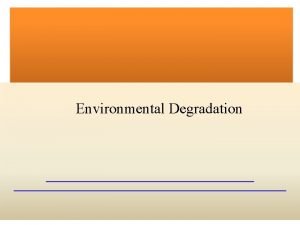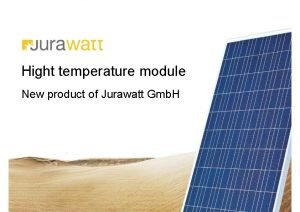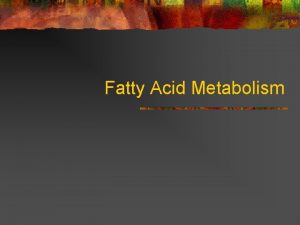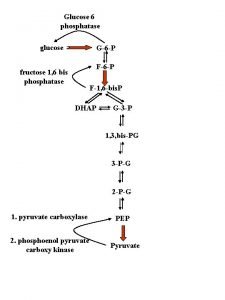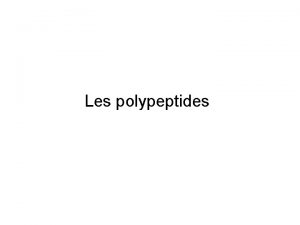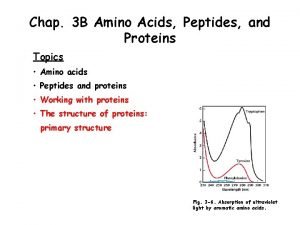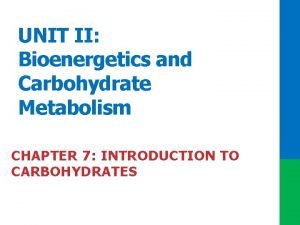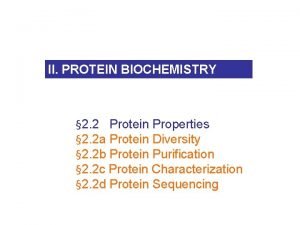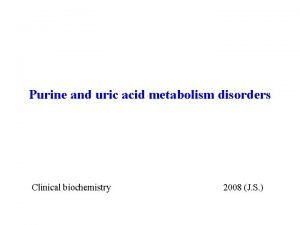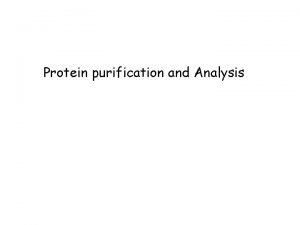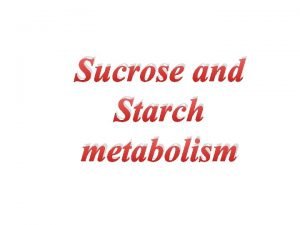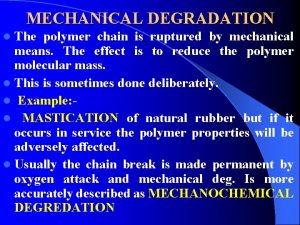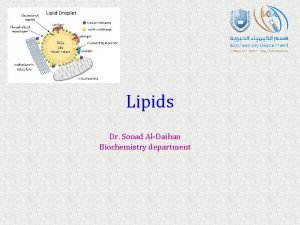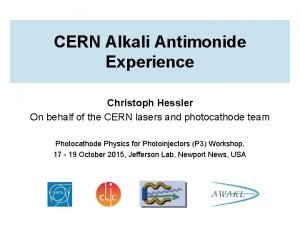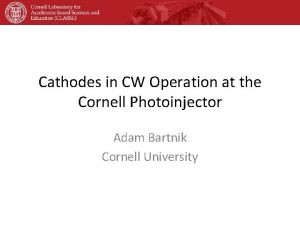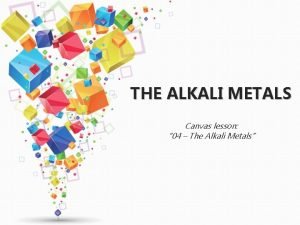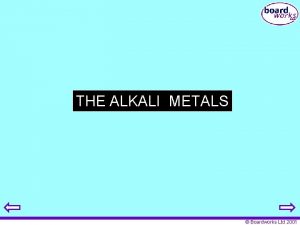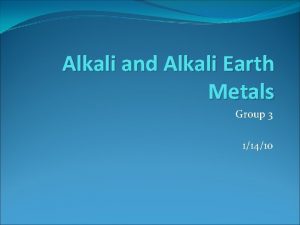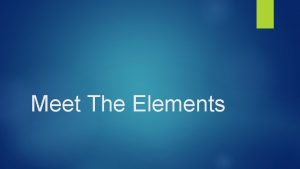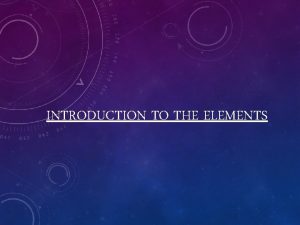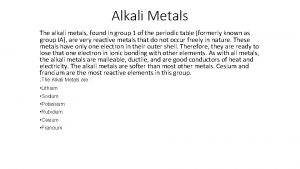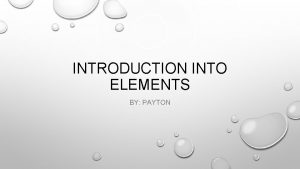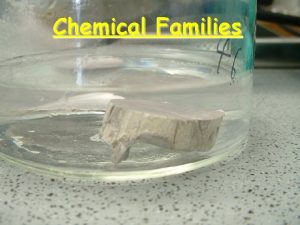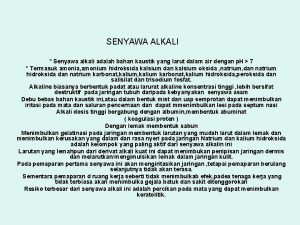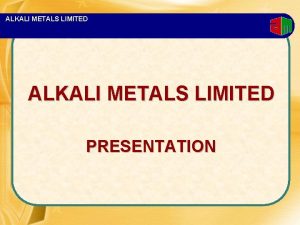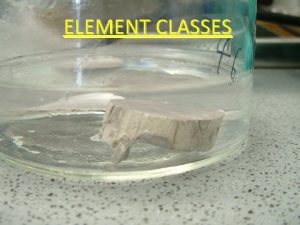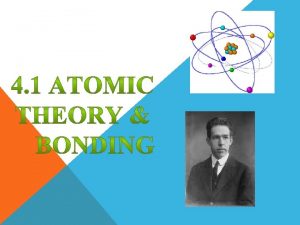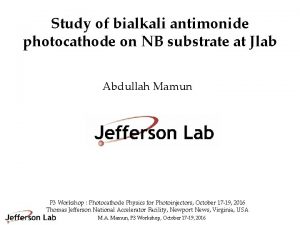Thermal Degradation of Alkali Antimonide Cathodes APEX Photoinjector



















- Slides: 19

Thermal Degradation of Alkali Antimonide Cathodes

APEX Photoinjector

APEX Photoinjector 3

APEX Nosecone Heating APEX cathode plugs Maximum temperature under full power ~ 52°C

Ternary Co-evaporation of cathodes for APEX K 2 Cs. Sb yield growth curve K 2 Cs. Sb QE(energy) - Simultaneous deposition of Sb, K, Cs (90 C) - 4 parameter initial search for correct conditions - Very robust and repeatable method - 7% QE is routinely achieved @ 532 nm distinctive purple color cathodes

Questions - How is cathode lifetime affected by operating temperature - What is the mechanism of thermal damage - Can the QE be recovered in some way Method - Prepare many cathodes by co-deposition (K 2 Cs. Sb, Cs 3 Sb) - measure QE (wavelength) - refine method to make cathodes as close to identical as possible - Measure QE (time) at defined temperature - Repeat for range of temperatures - 1 cathode for each temperature…. a tedious measurement

QE decay curves of K 2 Cs. Sb at 532 nm Initial QE in range 4. 5 – 5. 5% and normalized to 5%

Lifetime of K 2 Cs. Sb at 532 nm Limit set by vacuum

K 2 Cs. Sb: Full recovery of yield by re-cesiation: 100°C for 1 hr 100°C for 1 hour - Factor of 2. 7 loss in QE @ 575 nm, 1. 4 @ 350 nm - Re-cesiation recovers ~100% of QE

K 2 Cs. Sb: Partial recovery of yield by re-cesiation: 100°C for 12 hrs - Factor of 7 loss @ 575 nm, 3 @ 350 nm - Re-cesiation recovers only a fraction of initial QE - 40% at 575 nm and 53% at 350 nm

K 2 Cs. Sb: 100° C and 1. 5 hrs induces structural changes - (111) reflection not allowed - (111) indicates strain or disorder - Large (111) intensity after heating indicates disorder - crystal symmetry remains the same after heating - Thickness reduced by 5% after heating - Out of plane roughness similar after heating - x-ray induced x-ray fluorescence - Indicates loss of Cs - No loss of K or Sb

Summary: Thermal decomposition studies - Safe operating range with K 2 Cs. Sb up to around 55°C - Slightly higher than APEX cathode when under full power - Decomposition via loss of Cs, and partial recovery possible - Cs 3 Sb much less stable, Na. KSb much more stable

Workfunction Imaging using LEEM S. Karkare*, S. Emanian, G. Gevorkian*, H. A. Padmore (ALS, LBNL: * now ASU) A. Galdi (Cornell) A. Schmid (Molecular Foundry, LBNL) - Emittance depend on physical and chemical roughness - Physical roughness UHV AFM - Chemical roughness KPFM, LEEM and PEEM

Work function variation for K 2 Cs. Sb and Cs 3 Sb Height: Rms 0. 8 nm: pp 5. 5 nm Height: Rms 0. 7 nm: pp 4. 6 nm AFM measurements K 2 Cs. Sb Cs 3 Sb Work function: rms 15 me. V: pp 134 me. V Work function: rms 14 me. V: pp 93 me. V Kelvin probe measurements - KPFM measurements difficult and somewhat unreliable - Use LEEM to measure work function

Spin Polarized Low Energy Electron Microscopy (SPLEEM) 1 mm

(SP)LEEM measurements of work function

LEEM measurement of work function of Cs 3 Sb sequential deposition co-deposition @ 90°C co-deposition @ 70° C Same amplitude, much lower spatial frequencies at 70°C (lower transverse fields)

Summary: work function imaging using LEEM Aberration corrected LEEM, 2 nm resolution - 20 nm spatial resolution (2 nm) - 5 me. V work function ‘noise’ - Chemical potential roughness causes strong lateral potential gradients that degrade emittance - Strong dependence of gradients on deposition temperature - More work to be done on Cs 3 Sb at different growth temperatures, rates, and other antimonides The best probe should be PEEM (photon energy)…. . 1 st attempt not successful due to low flux New coherent supercontinuum source being tested…. . a Fowler plot / pixel at few nm resolution!

QUESTIONS
 Thermal energy section 3
Thermal energy section 3 Thermal transfer vs direct thermal printing
Thermal transfer vs direct thermal printing How environmental degradation occurs
How environmental degradation occurs Jurawatt
Jurawatt Metabolismn
Metabolismn Glucose 6 phosphatase
Glucose 6 phosphatase Edman degradation
Edman degradation Purification table
Purification table Land degradation definition
Land degradation definition Abnormal degradation of disaccharides
Abnormal degradation of disaccharides Importance of environmental degradation
Importance of environmental degradation Linear position invariant degradation
Linear position invariant degradation Salting out proteins
Salting out proteins Prdp biochemistry
Prdp biochemistry Edman degradation
Edman degradation Linear position invariant degradation
Linear position invariant degradation Conclusion of environmental degradation
Conclusion of environmental degradation Fructose 1 6 bisphosphatase
Fructose 1 6 bisphosphatase Mechanical degradation
Mechanical degradation Tag degradation
Tag degradation


